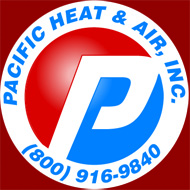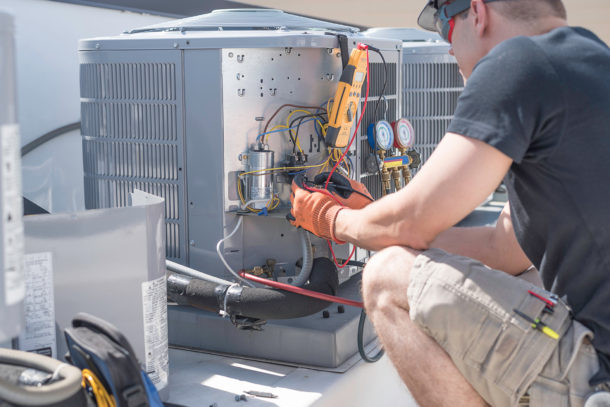Introduction to HVAC Systems
When it comes to ensuring comfort in residential or commercial spaces, HVAC (Heating, Ventilation, and Air Conditioning) systems play a pivotal role. These systems are not just about maintaining the temperature; they encompass a range of functions designed to create a conducive indoor environment.
What Does HVAC Stand For?
HVAC stands for Heating, Ventilation, and Air Conditioning. This acronym encompasses the three main functions of these systems, which are:
- Heating: This involves the process of generating warmth to maintain a comfortable indoor temperature during colder months.
- Ventilation: Ventilation refers to the exchange of indoor and outdoor air to improve air quality and remove pollutants.
- Air Conditioning: Air conditioning involves the process of cooling indoor spaces during warmer months to maintain a comfortable temperature.
Components of an HVAC System
Heating Components
Furnace
The furnace is the heart of the heating system in an HVAC setup. It works by heating air and distributing it throughout the building via ductwork or vents.
Heat Pump
Heat pumps are another common heating component in HVAC systems. They transfer heat from one location to another, either extracting heat from the outside air (air-source heat pump) or the ground (ground-source heat pump).
Ventilation Components
Air Ducts
Ensure that air circulates properly throughout your building. Proper maintenance of ductwork, detailed on our AC repair page, is essential for system efficiency and longevity.
Ventilation Fans
Ventilation fans help to exhaust stale indoor air and bring in fresh outdoor air. They are commonly found in bathrooms, kitchens, and other areas prone to moisture buildup and poor air quality.
Air Conditioning Components
Compressor
The heart of the air conditioning system, which pressurizes refrigerant to cool your home. Discover more about how compressors work and why regular maintenance is crucial on our AC repair services page.
Condenser Coil
The condenser coil helps dissipate heat from the refrigerant gas, causing it to condense into a liquid state.
Evaporator Coil
The evaporator coil absorbs heat from indoor air, causing the refrigerant to evaporate and cool the air in the process.
How HVAC Systems Work
HVAC systems work by controlling temperature, humidity, and air quality to create a comfortable indoor environment. Here’s a brief overview of how these systems operate:
- Thermostat Control: The thermostat serves as the control center for the HVAC system, allowing users to set their desired temperature.
- Heating or Cooling: Depending on the temperature setting, the HVAC system will either activate the heating or cooling components to adjust the indoor temperature accordingly.
- Air Circulation: Once the air is heated or cooled, it is circulated throughout the building via the ductwork or vents.
- Ventilation: In addition to heating and cooling, HVAC systems also provide ventilation by exchanging indoor and outdoor air to maintain air quality.
HOW MUCH DOES A NEW AIR CONDITIONER OR FURNACE COST?
Prices can vary from state to state and depend on multiple factors like the make and model you choose and even the size of your home. That’s why we recommend contacting your local Trane dealer to schedule your custom, in-home evaluation and estimate. Check out our free online estimate and recommendation tool or our pricing guide for more details.
The Cost of a New Air Conditioner or Furnace in Sacramento Investing in a new HVAC system involves various factors that influence the final cost, including the type of system and the size of your space. For specific pricing, schedule a custom in-home evaluation with Pacific Heat and Air.
Benefits of HVAC Systems
Comfort
One of the primary benefits of HVAC systems is the comfort they provide by maintaining consistent indoor temperatures throughout the year.
Energy Efficiency
Modern HVAC systems are designed to be energy-efficient, helping to reduce energy consumption and utility costs.
Improved Air Quality
By providing ventilation and air filtration, HVAC systems help to remove pollutants and allergens from indoor air, improving overall air quality.
Increased Property Value
Installing a high-quality HVAC system can increase the value of a property, making it more attractive to potential buyers or tenants.
Conclusion
HVAC systems are essential for maintaining optimal indoor comfort and air quality in Sacramento. Understanding each component and their function helps you make informed decisions about maintenance, upgrades, and new installations.
Call to Action Ready to optimize your home’s comfort with a new or upgraded HVAC system? Contact Pacific Heat and Air today for expert advice and tailored solutions that meet your heating and cooling needs in Sacramento.
FAQs
- What does HVAC stand for?
- HVAC is an acronym for Heating, Ventilation, and Air Conditioning. These systems control the temperature, humidity, and air quality in residential and commercial environments to provide comfort and a healthy living space.
- How often should HVAC systems be serviced?
- HVAC systems should generally be serviced once a year to ensure they operate efficiently and effectively. It’s recommended to service the cooling system in the spring and the heating system in the fall to prepare for the upcoming seasons.
- What type of HVAC system is best for a Sacramento home?
- In Sacramento, where summers are hot and dry, and winters are mild, a heat pump system is often ideal. Heat pumps provide efficient cooling and heating in one system, making them cost-effective and suitable for the moderate winter climate.
- How do HVAC systems work?
- HVAC systems regulate indoor climate through a cycle of air intake, temperature adjustment, and distribution. The system typically includes an outdoor unit (containing a compressor and condenser) and an indoor unit (with an evaporator and fan), connected by refrigerant lines that cycle the refrigerant through various phases of compression, condensation, expansion, and evaporation.
- What are the signs that my HVAC system needs repairs?
- Signs include unusual noises, insufficient airflow, thermostat issues, bad odors, frequent cycling, and unexpectedly high energy bills. These symptoms might indicate problems such as blocked filters, leaks, or mechanical failures.
- How can I improve the energy efficiency of my HVAC system?
- Improve energy efficiency by regularly replacing or cleaning air filters, ensuring proper insulation of your home, installing a programmable or smart thermostat, scheduling regular maintenance, and considering an upgrade to a higher-efficiency system if your HVAC is older.
- What is a SEER rating and why is it important?
- SEER stands for Seasonal Energy Efficiency Ratio, a measure of an air conditioning unit’s cooling output over a season divided by its energy consumption. A higher SEER rating means greater efficiency and lower electricity costs, which is crucial for saving money and reducing environmental impact.
- How long does an HVAC system typically last?
- A well-maintained HVAC system can last between 15 to 20 years. Factors affecting lifespan include the quality of installation, the unit’s model, and regularity of maintenance practices.
- Is it better to repair or replace an old HVAC system?
- It is generally better to replace an HVAC system if the cost of repair is close to 50% of the cost of a new system, or if the unit is more than 10 years old and experiencing frequent breakdowns. New systems are more efficient, reliable, and often come with warranties that provide peace of mind.
- Can smart thermostats save money on HVAC costs?
- Yes, smart thermostats can significantly reduce HVAC costs by adjusting your home’s temperature based on your schedule and preferences. They minimize energy use when you are away or asleep and provide optimal comfort when you are home, which can lead to substantial savings on energy bills.
- What is the cost of a new air conditioner or furnace?
- The cost can vary widely based on the type of system, its features, and installation complexity. In general, new air conditioners can cost anywhere from $3,000 to $7,000 installed, while furnaces might range from $2,500 to $6,000. High-efficiency models and additional features like zoning systems can increase the initial investment but result in long-term savings.
- How do I choose the right HVAC contractor?
- Choose a licensed, insured, and bonded contractor with good reviews and recommendations. Look for certifications from reputable organizations like NATE (North American Technician Excellence) and a track record of reliable service. Ensure they provide a detailed estimate in writing and offer a warranty on both the equipment and their labor.
Ready to optimize your home’s comfort with a new or upgraded HVAC system? Contact Pacific Heat and Air today for expert advice and tailored solutions that meet your heating and cooling needs in Sacramento.


